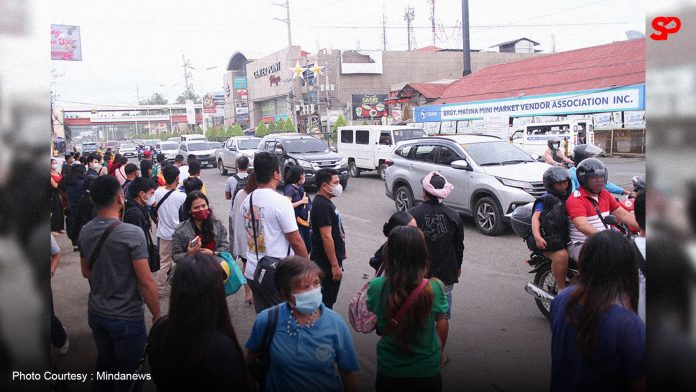By Sam Ramos
The Land Transportation Franchising and Regulatory Board in Region 11 (LTFRB-11) is considering deploying modern public utility vehicles (PUVs) to address Davao City’s public transport issues while awaiting the full implementation of the High Priority Bus System (HPBS), projected for 2026.
At the Habi at Kape media forum on Wednesday, LTFRB-11 Director Nonito A. Leanos announced the ongoing study by a technical working group to assess Davao’s traffic and public transport landscape. The study, expected to be completed by mid-December, aims to propose interim solutions that could alleviate the current transit challenges facing commuters in the city, particularly due to an increase in ridership.
Davao has faced a significant shortage of PUVs, with more than a thousand jeepneys ceasing operations following the COVID-19 pandemic. Factors contributing to this decline include aging units unable to meet roadworthiness standards and operators awaiting the HPBS transition. To ease commuter woes, particularly during peak hours, the local government has rolled out the Peak Hours Augmentation Bus Service (PHABS), covering 14 routes, with recent additions connecting key city areas.
The HPBS, a major infrastructure project funded by a $1 billion loan from the Asian Development Bank (ADB), is expected to bring a long-term solution to Davao’s transit needs. Aimed at reducing the city’s congestion, the HPBS will introduce around 1,100 Euro 5-standard and electric buses, capable of serving an estimated 800,000 passengers daily. The project also includes constructing approximately 1,000 bus stops with shelters and lighting, five depots, three terminals, and training for new bus drivers.
“Modern PUVs could be a temporary solution until the HPBS launch,” Leanos said, describing the plan to improve the city’s existing transport infrastructure. Currently, 87 modern PUVs with 28-passenger capacities have been deployed in Davao del Sur, and similar models may be introduced in Davao City if the proposal is approved.
Transportation Secretary Jaime Bautista confirmed in early October that the HPBS remains on schedule, with completion targeted for 2026. The project’s four-tier system—comprising MetroDavao, DavaoInter, DavaoFeeder, and DavaoLocal—will strategically connect major city hubs and rural areas, aiming to significantly reduce travel time for residents.
With an investment of P73.4 billion and backed by the ADB, the HPBS project is one of the Philippines’ most ambitious transport modernization initiatives, addressing both economic growth and sustainability. Once operational, the system is expected to redefine public transit in Davao City, making it safer, more efficient, and environmentally friendly.

